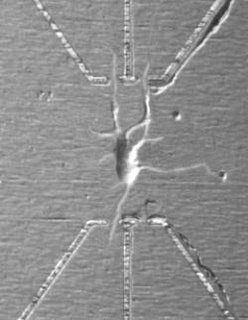
This picture is not a Canberra landscape but perhaps how I imagine it. Canberra was conceived by decree. As a town it lacks the activity of a spontaneous history in its colonial origins. It lacks chaos. The traditional owners who celebrate the wild, were moved aside, their lands stolen to make way for white settlement. Canberrans live on stolen property. I wonder how that seeps into our consciousness and how to paint that figuratively rather than a figure of Ngunnawal pointing the bone. We try to hide and to hide from the spirit of the land, but it is here, perhaps haunting our footsteps.
Most of the edges to water are managed by concrete to prevent anything flowing its own way. This is in a dry arid land, with little annual rainfall. Man made 'lakes' are circled by clearly marked paths, which even the birds seem to respect. They are shallow and only exist because of concrete damn walls down stream. Each suburb has a show piece of one of these large ponds.
In any other place I would expect to see the ebb and flow of white settlement. Those that rise and flow with the rainfall and climate, with economic expansion and contraction over many decades. Allotments at the edges of the suburbs where people were free to grow anything and to build what they liked. Alley ways between buildings where traders eke out a living rent free. Coffee stands greeting the football crowd all along the route to the stadium. And everywhere the aboriginal community squeezed into an existence in shanty towns at the edges of town. None of this is permitted. The image of African Americans living in the alley ways between beautiful Victorian buildings in Hollins Street, Baltimore before the great fire of 1914, described in "Mencken - the American iconoclast. The life and times of the bad boy of Baltimore", was nowhere to be seen ever in Canberra.
Everywhere the edge is imposed and innovation subject to fiat and decree. As a consequence, Canberrans seem to me at times frightened of edges. As one visitor put it to me, overseas travel for Canberrans is crossing the bridge that divides northern from southern suburbs. It can takes weeks of preparation and a number of phone calls on the day - by the traveler to make sure the person is at home and is expecting them and by the person at home to make sure the fool hardy visitors are safely on their way.
God forbid that we should find ourselves in a strange suburb without a house to scurry into or that our 'overseas' travelers may be abandoned to their fate having gone to the wrong street,or perhaps worse, the wrong house in the right street. This would be somewhat understandable if it were the landscape pictured above. But the place is on an almost flat plain with gentle suburban slopes and sometimes snow capped hills beyond its perimeter that we call mountains.
We appear cautious about the unmapped areas of life. Quickly retreating behind our suburban or career screens. It is a place where many short stay inhabitant describe isolation as the reason for their leaving. It is like a city of bits that has the illusion of unity welded onto it. No-one quite believes it's a city.
Those of us who stay have somehow accommodated the isolation behind sculptured suburbs, by extremes of interests and activities. We proclaim Canberra has a soul and that you don't have to scratch the surface much to find it. I have found it in the bush surrounding the place and among the warm and welcoming people I hang out with.
It is de rigeur to proclaim Canberra lacks a soul, usually by the very people who make Canberra, per capita the greatest contributer of volunteers Australia wide. For example, Canberrans give as much blood to the Red Cross blood bank as half the population of NSW. Population Canberra 340,00. Population NSW 6.73 million.
Because of our high average education and income, we are also on average, the healthiest and most longest lived in Australia, which we tend to put back into communities around the world through volunteering, donations and gifts. So the soulless claim is not about heart - I think it's a victim statement, such as, 'poor us don;t blame us for Federal Governement actions and inactions, we're without a soul.'
I am working on a landscape, painting it as a triptych. I am discovering that landscape is a medium of ideas. Canberra is an idea sculptured into its plan. This pervades the social life of the town and I want to put that into my painting. I wonder who and what is marginalia by the process? How to paint that cultural landscape?
'Rhetorics of Space, Place, Mobility, Situation: Some sources' at http://wrt-howard.syr.edu/Bibs/Space&Place.htm
The lure of sacred sites http://www.saskworld.com/bodymindspirit/edition17/05_article_martin.htm
